We have not had something as thoroughly comic book movie-y as The Amazing Spider-Man 2 in quite a while. Iron Man 3 had extremis-powered soldiers with mutant-like powers, and Captain America: The Winter Soldier gave us Toby Jones as an almost literal talking head. But Amazing Spider-Man 2 has a mad scientist who speaks as if he didn’t realize Peter Seller’s Dr. Strangelove voice was meant to be a joke, a lab accident-created villain who proudly declares, “I am Electro!”, a Russian mobster with an accent straight out of Rocky & Bullwinkle, and a general camp-quality to almost every moment involving costumed crimefighters and villains. However, because Peter Parker is such a younger superhero prone to juvenile one-liners and constantly battling accident-created villains he may not really ever be primed for a Christopher Nolan or Marvel Studios-esque treatment aspiring to be anything more than a fun comic book movie. Showing us in The Amazing Spider-Man 1 all the bruises and scars Parker encurs from Spider-Man combat, ala Kickass, may be as grounded in reality as it gets for him on film.
So, ASM 2 is made with family-friendly viewing on its mind, a likely relief for any parent left scrambling last summer to explain why Superman just snapped a guy’s neck in Man of Steel (although there is still a BIG death in ASM 2). There’s nothing wrong with that. It doesn’t mean Amazing Spider-Man 2 gets a free pass, though:
SPOILERS AHEAD FOR The Amazing Spider-Man 2 (obviously)
1. Did we really need to finish off the “Untold Story” From Amazing Spider-Man 1?
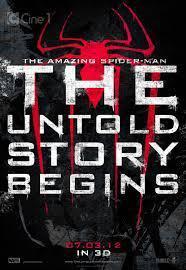
The first Amazing Spider-Man was an origin story which only partially finished its own origin. As was widely discussed on the internet in 2012, due to Sony’s media saturation marketing strategy for Amazing Spider-Man 1 there was ample video and photo evidence that the great “untold story” of Peter Parker’s transformation into Spider-Man was cut from the film by Sony very late in the game. To some, this was a good thing because the alternate origin story, while different enough to stand out from the Raimi films, sounded remarkably stupid. As io9.com argued:
“There’s just the fact that Spider-Man’s origin, like a lot of the best Stan Lee creations, is incredibly simple — except in its ramifications. Spidey’s single spider-bite gives him the power, and then the interesting question is what he does with that power. Making the mechanics of Spidey’s power-up more complicated just messes with what makes him such a classic hero — so it’s a very, very good thing that Sony slashed and burned that subplot from Amazing Spider-Man. Let’s hope it’s kept out of the sequels, too.”
Oh, it’s in the sequel. Since Sony had so profusely promised the “untold story” with ASM 1 many walked away having felt lied to since the actual film merely introduced some vague mystery about Peter’s parents, and then left the rest for the sequel. Screenwriters Alex Kurtzman, Robert Orci, and Jeff Pinkner, all three of whom are new to the Spider-Man franchise, do their best to provide resolution in ASM 2, using Peter’s search for answers about his dad to tie-in to Harry Osborn’s drama.
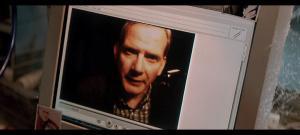
Richard Parker? Turns out to be good dad. Norman Osborn? Bad dad.
However, regardless of whether or not the entire story line was a bad idea to begin with (e.g., Peter Parker should NOT be “the chosen one”) it should not have been carried over into the sequel, which is overly burdened with tying up that loose end that it basically stops all forward moment to zig to the right so that Peter can think about his dad again. On its own, the scene with Peter uncovering his father’s video and secret research facility is a bit of alright. However, it ultimately adds even more plot to a film with too much of that.
2. Electro needed something better than a Riddler-from-Batman-Forever motivation
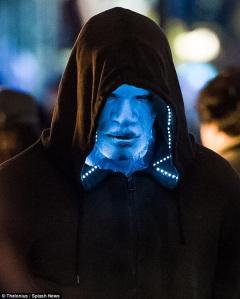
A hero is only as good as his villain, but Electro isn’t so much a villain as he is an excuse for cool action set pieces. By the end, when he just poofs into nothingness, overloaded by the power grid due to Spider-Man and Gwen Stacey’s quick thinking, we should feel something, right?
So, why don’t we? Because they didn’t give us a real reason to care about him or his motivation. Jaimie Foxx comes off like a Joel Schumacher Batman villain stunt-cast with a big name who can chew the scenery, except unlike Jim Carrey, Tommy Lee Jones, Arnold Schwarzenegger, and Uma Thurman Foxx actually seems to be taking this seriously. His Times Square scene, at least his initial confusion as to what has become of him, is one moment when that really works. That might be the only successful moment, though.
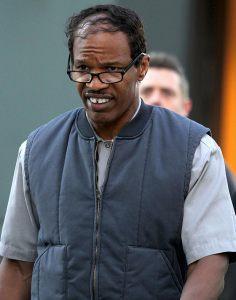
Steve Urkel as a pre-lab-accident supervillain
Foxx is ill-equipped to play the pre-Electro Max Dillon, with the comb-over hair and obsession with Spider-Man (are they trying to make some parallel between his obsession with Spidey, and Parker’s obsession with his father?). We get it – Dillon is a sad, lonely guy, like a Big Bang Theory character who had yet to find his own Leonard, Sheldon, etc. gang. But turning on Spider-Man because he forgot his name? Cutting New York’s power so that they can know how he’s felt all his life: powerless? You can try and intellectualize it and argue that due to Foxx’s skin-color his primary motivation of no longer wanting to feel invisible is meant to evoke Ralph Ellison’s classic novel The Invisible Man, but that goes looking for depth where there is none.
3. Why is the Green Goblin in this movie?

Dane DeHaan showed he could play odd outcast given to gradual madness to spectacular effect in the found footage superhero movie Chronicle, and though he’s sometimes practically upstaged by his own hair in ASM 2 he basically does another riff on the Chronicle character, with limited effectiveness. They decided not to hold back, and have Harry Osborn turn into the Green Goblin, teaming up with Electro ala Sandman and Venom in Spider-Man 3 to take down the good guy. As a result, it feels oddly anti-climactic when Spider-Man defeats Electro because the Green Goblin is flying in right around the corner. It’s not Spider-Man 3-level bad, but Electro and Green Goblin definitely do not benefit from each other’s presence.
You can understand the filmmakers’ predicament: Harry Osborn’s transformation into the Green Goblin is now well-known. Why string it along, right? Just lean into it. However, since Harry basically didn’t exist at all in ASM 1 the sequel is burdened with introducing him, making us kind of like him, establishing his fractured relationship with his dying dad, making us believe that he and Peter were once best friends who re-bond as sons to now-dead dads, and then revealing that he’s dying.
So, his actions are that of a desperate man, and his previously stated slight opposition to Spider-Man gets an injection of crazed vengeance when Spidey appears to refuse to help him. However, it’s all just way too much for this movie to properly deal with. Marc Webb has stated his idea of a theme for ASM 2 was time, i.e., appreciating the time we have since who knows how long it will last. That does tie into Harry, who was born with an hereditary expiration date without realizing it. It still feels like he only becomes the Green Goblin in this movie because they needed to set-up the Sinister Six, and that the Green Goblin is the one who killed Gwen in the comics, which they wanted to honor since Gwen was so clearly going to die in this movie.
4. Why is Harry Osborn dying so quickly?
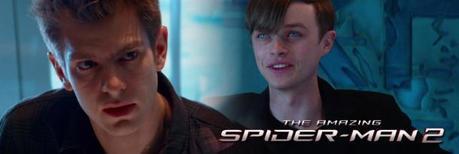
Electro’s motivation is that of a borderline stalker who turns on his target of affection for not reciprocating his feelings, thus making Spider-Man a focal point for all his rage. Harry Osborn/Green Goblin’s motivation is primarily to survive, but to take it out on Spider-Man for refusing to help him. As stated above, his actions are that of a desperate man, and as in the Raimi films we are likely meant to believe the serum which transforms him into Goblin induces some type of psychosis.

However, for Osborn’s transition to work we need to understand and believe that he is dying. ASM 2 doesn’t quite pull that off. For starters, it is jarring the astonishing rate at which Harry’s medical condition deteriorates. Perhaps his odd, sickly appearance from the get-go is meant to indicate he was already dying from his hereditary condition without realizing it, yet it seems to get kicked into overdrive the moment his father gives him the ole, “Oh, btw, you’re dying, thought you should know. Also, you’ve been nothing but a disappoint to me.”
The obvious question, then, is why Harry is on his death bed so quickly at age 20 when his dad managed to stick around until he was 63? The implication is because Norman was able to use his massive resources and own scientific know-how (and probably Richard Parker’s know-how) to prolong his life, but it’s not made clear enough why Harry can’t simply take advantage of similar resources at his disposal within Oscorp to deal with that. Their hope was probably that the efforts of the other board members to take Oscorp away from Harry would cover that, and maybe it does for those who give the film a more charitable viewing. But it all feels remarkably rushed.
5. Where did the pumpkin bombs come from?

In the climactic fight between Goblin and Spider-Man, we see Goblin on his glider with newly yellow-green skin and an array of pumpkin bombs at his disposal.
F’n a! That’s the Goblin, dangit. However, and this was equally true for the Green Goblin in Sam Raimi’s Spider-Man,: where did the pumpkin bombs come from? Raimi’s Goblin was developing them for the military, and Webb’s steals them from an Oscorp arsenal. That’s fine. Of course there’d be some grenade-like devices around, but why ones which look like pumpkins? Obviously, the answer is because that’s what the Goblin’s bombs look like in the comics so shut up aabout it you big nerd. However, still, pumpkin bombs? To be fair, this is the most actual nitpick-y item on this list.
6. The Playstation special effects didn’t go away
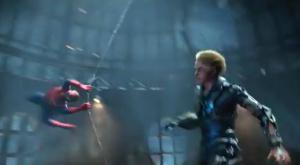
Upon the release of the initial ASM 2 trailers, many were quick to point out the striking similarity between some of the effects shots and the graphics in the Amazing Spider-Man Playstation 3/Xbox 360 video game, often posting side-by-side comparisons as proof.
Of course, at that point maybe you can cut the filmmakers a little slack since there were still several months until the release of the film, and plenty of time to finish the CGI. In some areas, the patience was worth it because the special effects are positively stunning. In other areas, though, they seem oddly sub-par for a movie with a production budget anywhere between $200 and $250 million, “Spider-Man too often seems weightless when he’s flying or being hurled around by his various foes, and during busy action scenes the animation seems quite jerky and stilted.”
7. Is it empowering that Gwen Stacy puts herself in danger? Or annoying since it results in her death?
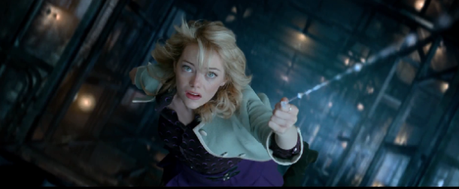
Emma Stone’s Gwen Stacy is no Mary Jane Watson. I mean that in a good way because in the damsel in distress department Kirsten Dunst’s MJ probably couldn’t find a reputable life insurance company to cover her considering how often she was placed in danger (and offering really minimal resistance). So, ASM 1 had Gwen refusing to leave the Oscorp Tower full of employees the Lizard could harm, and ASM 2 has her literally drive a police car into Electro, shutting down Spider-Man’s arguments for her to run to safety by claiming her own agency in choosing to put herself in danger in order to help him.
There is a certain girl power element to the moment, ala MJ telling Tobey Maguire’s Peter Parker at the end of Spider-Man 2 that he doesn’t get to unilaterally make the decisions for them since if she wants to put herself in danger by being with him that is her choice to make. With the superhero community primarily a sausage fest on film at this point the preferred method to give the damsel in distress a bit of Angelina Jolie bite is to have her fight back like this, often literally ala Laurel following Oliver and helping him fight off a bad guy in a recent episode of Arrow. However, the typical byproduct is it simply gives the hero another barrier since he now has to protect someone who won’t flee for safety. So, is it empowering that Gwen Stacy puts herself in danger, or simply annoying that she shows up, helps defeat Electro, literally just stands there looking at Goblin, and then gets taken away and killed?
8. The Expository dialogue is fairly terrible
ASM 2 screenwriters Robert Orci and Alex Kurtzman have worked with J.J. Abrams enough that they too have become polarizing figures among film fans just like the great bespectacled one. So, for some, knowing that ASM 2 was a Orci/Kurtzman joint, i.e., the guys who also wrote the Transformers films, meant knowing to expect lots of clunky exposition. As described by BadAssDigest:
“After Spider-Man’s first battle with Electro, where he gets blasted by electricity a lot, the script has a guy – a bystander at the fight! – come on TV and explain that Spider-Man didn’t die because his costume must be rubberized in some way. How do you write a script where that’s how this information is imparted? I couldn’t believe I was watching a professional production. That isn’t the only bad exposition bit. The film constantly has characters explain the plot and themselves to one another (they have to, because the movie feels like a sequel to a film that isn’t The Amazing Spider-Man half the time. Harry Osborn is suddenly Peter’s best friend, which is why we never heard about him before?). There’s a scene where science genius Peter Parker (remember what a big deal it was reclaiming Pete’s science skills in the reboot?) watches a YouTube video to find out the basic properties of batteries.”
This has gone for over 2,400 words at this point meaning maybe it’s time to stop even though there are other things to tear down, such as the film’s odd accents for Rhino and Dr. Kafka, how stupid Rhino’s armor looked at the end, the really strange fantasy sequence with Max Dillon assaulting his boss for speaking ill of Spider-Man, the “too many endings” problem, etc. What about you? Are there things you disliked about Amazing Spider-Man 2 which weren’t discussed above? Things you liked that clearly I did not? Let us know in the comments section.
If you like this, check out our other “Nitpicking” Articles
- Nitpicking Captain America: The Winter Soldier
- Nitpicking The Hobbit: Desolation of Smaug
- Nitpicking Man of Steel – 4 Things We Liked & 4 Things We Didn’t
- Nitpicking Iron Man 3 – 5 More Things That Bothered Us
- Nitpicking Iron Man 3 – The 8 Things That Bothered Us

